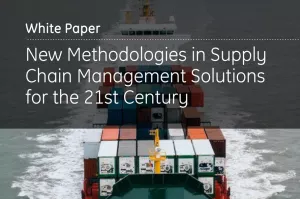Growth in Supply Chain Management Solutions Has Led to Better Financial Performance
Supply chain management has undergone a sea change in the 21st century -- by embedding product and process innovation in supply chain operations and consciously managing and shaping demand from customers, this critical function has advanced a great deal. Twenty years ago, the supply chain of a typical product company would report to manufacturing, and be responsible mainly for inbound materials management and outbound shipping. According to the Supply & Demand Chain Executive magazine, supply chain reports to manufacturing in only 6% of companies, while in 61% of companies, the head of supply chain position reports directly to the CEO, GM or president of the business. It is clear that the supply chain has grown, and businesses are taking notice.
Supply Chain Management Solutions
There is a lot of potential in benefitting from new age supply chain management solutions as companies recover from the recent financial crisis, and position supply chains as enablers of revenue and margin growth. Procurement processes that support the design and management of a sustainable supply chain are becoming critical for providers of goods and services in nearly every part of our economy. In the demand-driven supply chains, companies are looking toward more lean procurement processes. Research firm Gartner recently reported that the global supply chain software market contracted 0.7 per cent from 2008, with revenue totaling $6.2 billion in 2009.
However, supply chain applications have weathered the financial storm of recent times. Meanwhile, in the fourth quarter of 2009, the market sustained 6 per cent annual growth, according to Gartner. The specialized segment of SCM software revenue totaled $3.5 billion in 2009, a 1.6 percent increase from 2008, while the suites segment of SCM software revenue totaled $2.7 billion in 2009, a 3.7 percent decline from the 2008 revenue.
The report also states that the SCM market is likely to mimic the ERP market in future, given the market's vendor fragmentation and the continued expansion of suite vendors. There is greater interest in supply allocation options, demand prioritization and customer segmentation.
Companies are realizing that the FIFO (first-in-firstout) approach to customer demand isn't good enough anymore.
Trends of supply chain management
The Supply & Demand Chain Executive magazine conducted a series of discussions with business leaders, which uncovered the following trends:
There is a possibility of the emergence of a closed loop supply chain. Sometimes referred to as a cradle-to-cradle (C2C) supply chain, this term describes a zero-waste supply chain that re-uses all materials.
Certifying the suppliers' supplier as a sustainable source is very important. Comprehensive back-end research is required to manage this process, and enormous effort is being devoted to ensure the selection of the right certification system.

Commodity trading is a new practice and procurement professionals managing sustainable supply chains are becoming conversant with this practice. Supply chain executives now must understand how all these markets work and the impact they may have on their businesses. In the 21st century, supply chain professionals must be highly competent in negotiating complex and dynamic agreements in the buy/sell space. They also need to familiarize themselves with hedging, and understand the working of the just-in-time delivery inventory management approach.
Concerns of supply chain management
PRTM, a global management consulting firm, conducted a survey to understand the trends in supply chain management from 2010-2012, and determined five key supply chain challenges global companies are struggling with today:
- Consumers are increasingly price sensitive and less brand-loyal, resulting in commoditization and a permanent increase in supply chain volatility
- While most participants are looking to international customers for future market growth, few are prepared for the complexity that results from serving global customers with regionally customized products
- End-to-end supply chain cost optimization will be critical in future
- Risk and opportunity management should span the entire supply chain, including the supply chains of key partners
- Existing supply chain organizations are not truly integrated or empowered -- lack of integration between product development and manufacturing functions are standing in the way of capturing the benefits of economic recovery
Though supply chain management practices are growing rapidly, there are challenges to be addressed. Until the industry finds methods of overcoming these challenges successfully, companies will continue to not be productive and profitable in their globalization efforts.


